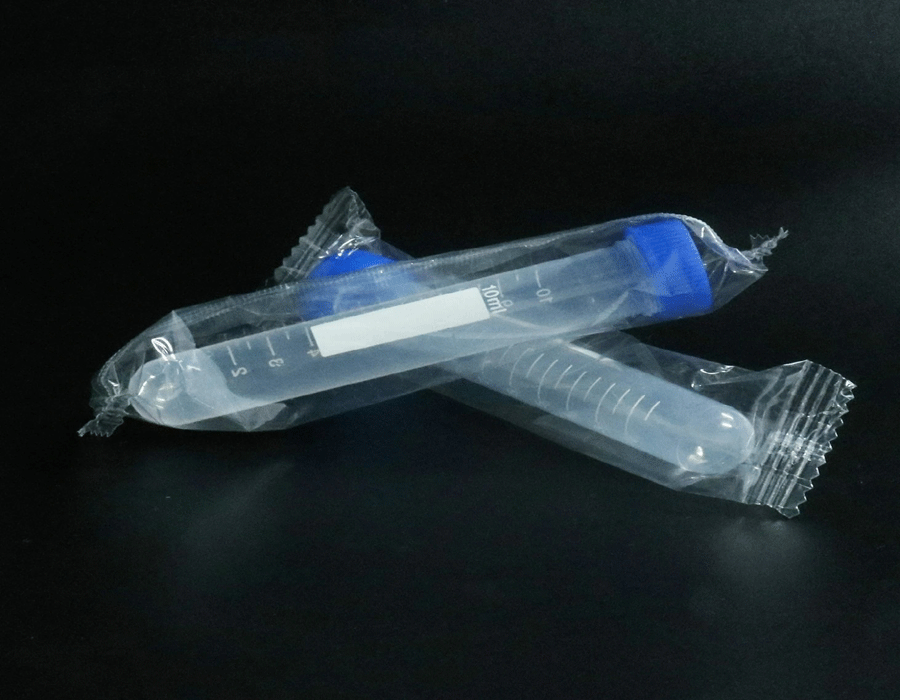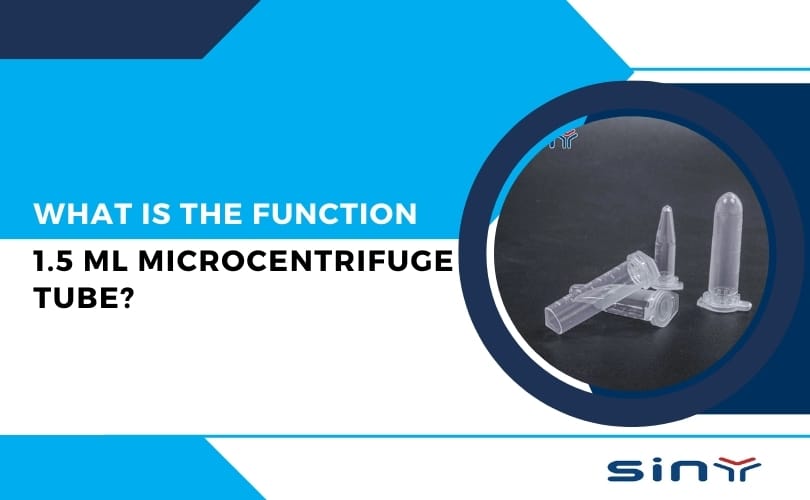Centrifuge tubes are essential laboratory equipment used for a variety of scientific applications. In this article, we will discuss what a centrifuge tube is, what it is used for, and why it is an important tool in any scientific laboratory.
Table of Contents
What is a Centrifuge Tube :
A centrifuge tube is a laboratory device used to separate two different substances or components in a solution. It is most commonly used in molecular biology, biochemistry, and chemistry labs to separate different components of a sample. The tube is placed in a centrifuge, which uses a force known as a centrifugal force to cause the separation of the components. Centrifugal force is created by spinning the tube in a circular motion, which causes the heavier components to settle at the bottom of the tube and the lighter components to be pushed to the top. This process can be used to separate different types of molecules, cells, viruses, and other particles. The speed and duration of the centrifugation process will depend on the type of sample, the amount of material to be separated, and the desired results. Different types of centrifuge tubes are available for different types of samples, such as those for microorganisms, proteins, and fatty acids. Centrifuge tubes can also be used for a variety of other purposes, such as to purify or concentrate samples, to perform tests on samples, or to prepare samples for further experiments. Centrifuge tubes are an essential tool in any laboratory, and they are an invaluable part of the scientific process.

Types of Centrifuge Tubes :
Centrifuge tubes are an essential piece of laboratory equipment used in a variety of applications. Depending on the specific nature of the application, different types of centrifuge tubes are available. The most common types of centrifuge tubes are open-top, screw-cap, and conical tubes. Open-top centrifuge tubes are typically made from a durable, shatter-resistant material and feature a wide-mouth opening for easy sample loading and retrieval. Screw-cap centrifuge tubes are ideal for applications where sample leakage is a concern and feature a tightly sealed, threaded cap for secure closure. Conical centrifuge tubes feature a long, sloped, cone-shaped bottom and are used for sample sedimentation and decanting. Each type of centrifuge tube is available in a variety of sizes, shapes, and materials to accommodate different sample volumes and applications. Additionally, many centrifuge tubes feature a clear, printed graduation scale for easy sample volume measurements. Each type of centrifuge tube has its own advantages and disadvantages and selecting the right one is important to ensure accurate and reliable results.

Advantages of Centrifuge Tubes :
Centrifuge tubes are one of the most essential laboratory tools used in research and experimentation. They are incredibly versatile, and they offer a wide range of advantages over other types of tubes. For starters, centrifuge tubes are made of a durable material that can withstand extreme temperatures and pressures. This makes them ideal for use in high-pressure or temperature-sensitive experiments. They are also much lighter than other tubes, making them easier to transport and store.
Centrifuge tubes also have the ability to separate heavier and lighter particles due to their design. This is a crucial aspect of many scientific experiments, as it allows for the separation of biological materials for further study. This also makes them useful for separating chemicals, proteins, and other substances. Centrifuge tubes are also often used in the process of lyophilization, or freeze drying, which is used to preserve biological samples.
Finally, centrifuge tubes are incredibly easy to use. They are usually supplied with a lid that can be easily opened and closed, and the tube itself is designed in such a way that it can be easily inserted into a centrifuge machine. This makes them a great choice for any lab that needs to quickly and efficiently process samples. With all these advantages, it’s no wonder that centrifuge tubes are so popular among scientists.
Uses of Centrifuge Tubes :
Centrifuge tubes are an essential tool for scientists and researchers in a variety of fields. They are used to separate components of a mixture based on their size, shape, density, and other physical characteristics. The tubes are usually made of glass or plastic and are designed to hold a suspension or solution that is put into a centrifuge and spun at high speeds. The centrifugal force created by the spinning separates the components of the mixture, allowing them to be easily collected and studied.
Centrifuge tubes are commonly used in the medical field to separate blood samples into plasma, red blood cells, and other components. This process can help to identify diseases and other medical conditions, as well as provide valuable information about a person’s overall health. They are also used in biochemistry and molecular biology to separate proteins, DNA, and other components of a sample.
In addition to the medical field, centrifuge tubes are widely used in other industries such as the food and beverage industry. They are used to separate and purify liquids, as well as to clarify and concentrate solutions. They can also be used to separate oil from water, allowing for the production of cleaner and more efficient products.
Centrifuge tubes are an invaluable tool for scientists and researchers, allowing them to quickly and accurately separate components of a mixture. Whether it is a medical, biochemistry, or food and beverage application, centrifuge tubes are an essential tool for the modern laboratory.
Considerations for using Centrifuge Tubes :
When working in the laboratory, centrifuge tubes are an essential tool for a variety of applications. It is important to understand the considerations that must be taken into account when using these tubes. First, it is important to select the right size and shape of the centrifuge tube for the particular application. Different sizes and shapes are available depending on the sample size and the speed of the centrifugation process. It is also important to select a tube that is compatible with the rotor to be used, as well as the centrifuge itself. Additionally, the material of the tube must be chosen carefully. Most centrifuge tubes are made of polypropylene or polycarbonate, however, other materials are available and should be chosen based on the sample and the application.
Once the tube has been chosen, it is important to ensure that it is properly sealed. This is especially important for high-speed centrifugations, as any leaks can be catastrophic. It is also important to pay attention to the maximum speed and temperature the tube can withstand, as well as the maximum volume of the sample that can be placed in the tube. Additionally, it is important to check the integrity of the tube before use and to discard any tubes that have any cracks or irregularities. Following these considerations can help to ensure a successful and safe centrifugation process.
Different Centrifuge Tube Capacity and Sizes :
Centrifuge tubes come in a wide range of sizes and capacities, allowing scientists to find the perfect tube for their needs. Depending on the amount of sample you are working with, you can choose a centrifuge tube with a capacity ranging from 0.25 mL to 50 mL. The standard size for centrifuge tubes is typically 15 mL, but some tubes come in larger volumes as well. Additionally, centrifuge tubes come in different shapes and colors, making it easy to differentiate between samples. For example, some tubes are round bottom and others are conical, and some come in a variety of colors such as blue, green, and yellow. If you are looking for a specific size or shape of the centrifuge tube, you can easily find it by searching online for the specific size and shape you need. With the wide range of sizes and shapes available, you can find the perfect centrifuge tube for your specific needs.
Conclusion
A centrifuge tube is an essential tool for scientists and medical professionals. It is a highly versatile tool that can be used for a variety of applications from extracting and separating cells to testing the quality of blood samples. It is a reliable piece of equipment that is easy to use and can help researchers and medical professionals run efficient experiments and tests. A centrifuge tube is an important tool that provides invaluable assistance in the laboratory.



























































